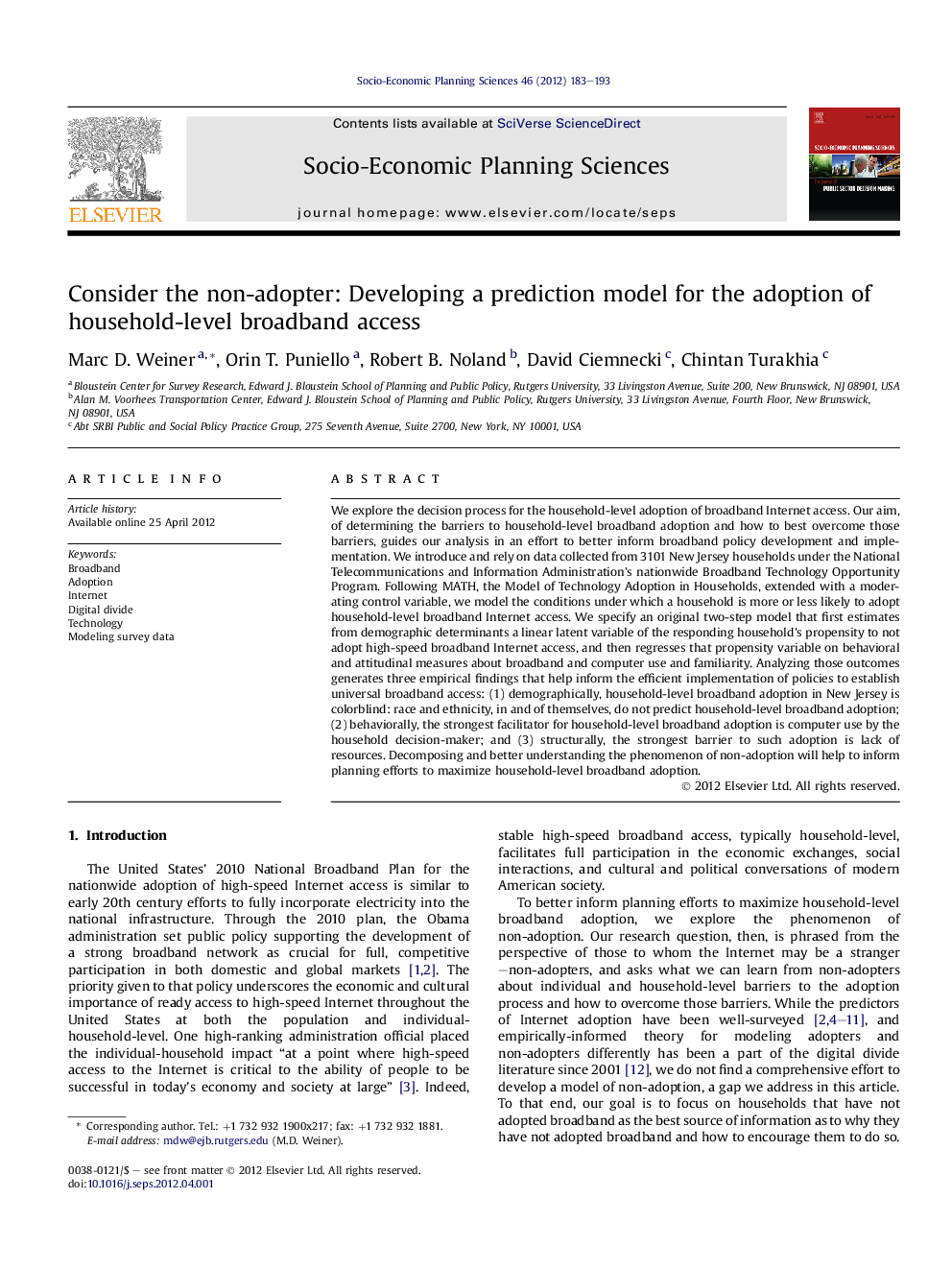| Article ID | Journal | Published Year | Pages | File Type |
|---|---|---|---|---|
| 987135 | Socio-Economic Planning Sciences | 2012 | 11 Pages |
We explore the decision process for the household-level adoption of broadband Internet access. Our aim, of determining the barriers to household-level broadband adoption and how to best overcome those barriers, guides our analysis in an effort to better inform broadband policy development and implementation. We introduce and rely on data collected from 3101 New Jersey households under the National Telecommunications and Information Administration's nationwide Broadband Technology Opportunity Program. Following MATH, the Model of Technology Adoption in Households, extended with a moderating control variable, we model the conditions under which a household is more or less likely to adopt household-level broadband Internet access. We specify an original two-step model that first estimates from demographic determinants a linear latent variable of the responding household's propensity to not adopt high-speed broadband Internet access, and then regresses that propensity variable on behavioral and attitudinal measures about broadband and computer use and familiarity. Analyzing those outcomes generates three empirical findings that help inform the efficient implementation of policies to establish universal broadband access: (1) demographically, household-level broadband adoption in New Jersey is colorblind: race and ethnicity, in and of themselves, do not predict household-level broadband adoption; (2) behaviorally, the strongest facilitator for household-level broadband adoption is computer use by the household decision-maker; and (3) structurally, the strongest barrier to such adoption is lack of resources. Decomposing and better understanding the phenomenon of non-adoption will help to inform planning efforts to maximize household-level broadband adoption.
► We explore individual and household-level barriers to Internet broadband adoption. ► We use an adapted MATH model with a moderating control to predict non-adoption. ► Empirically, multivariate analysis reveals race and ethnicity as non-predictive. ► Computer use by the household decision-maker strongly predicts broadband adoption. ► Structurally, the strongest barrier to broadband adoption is lack of resources.
